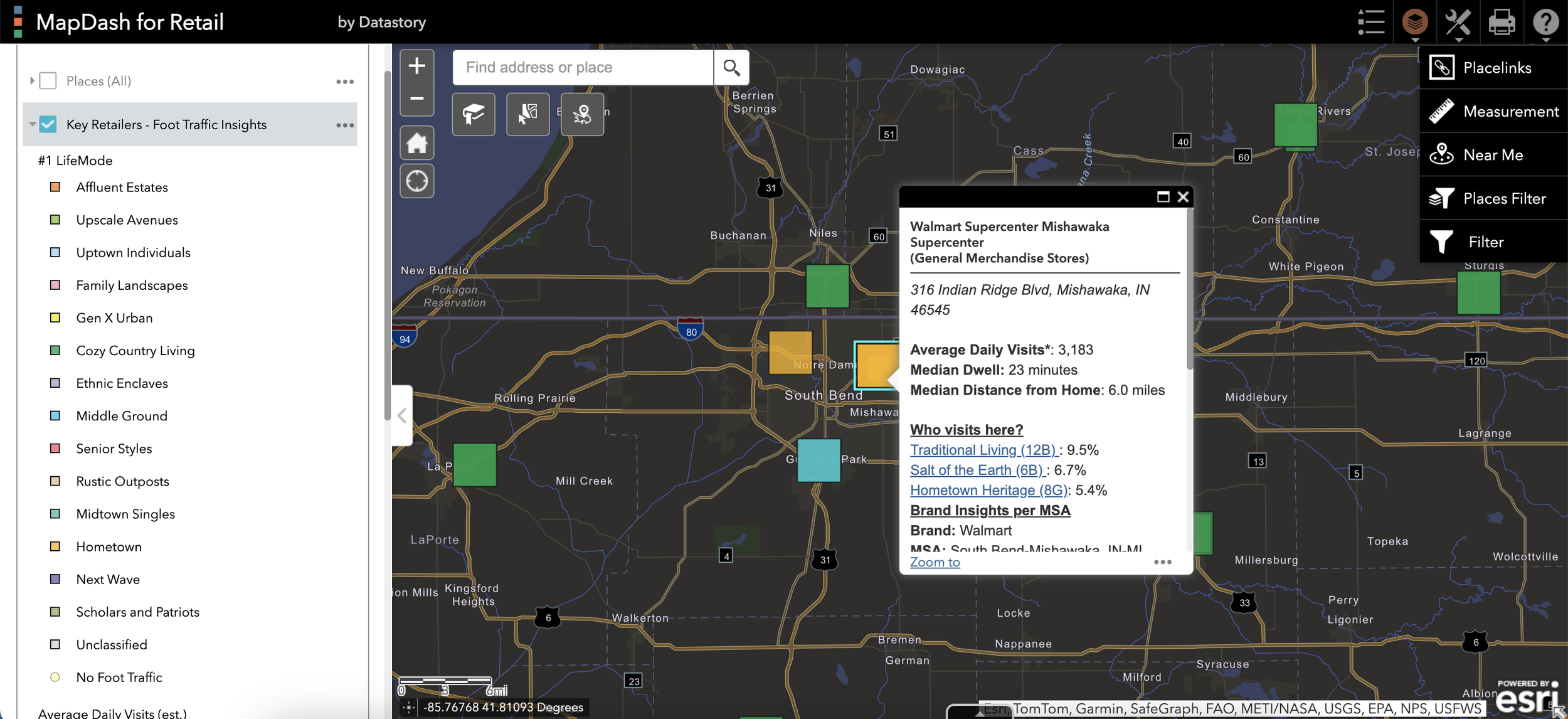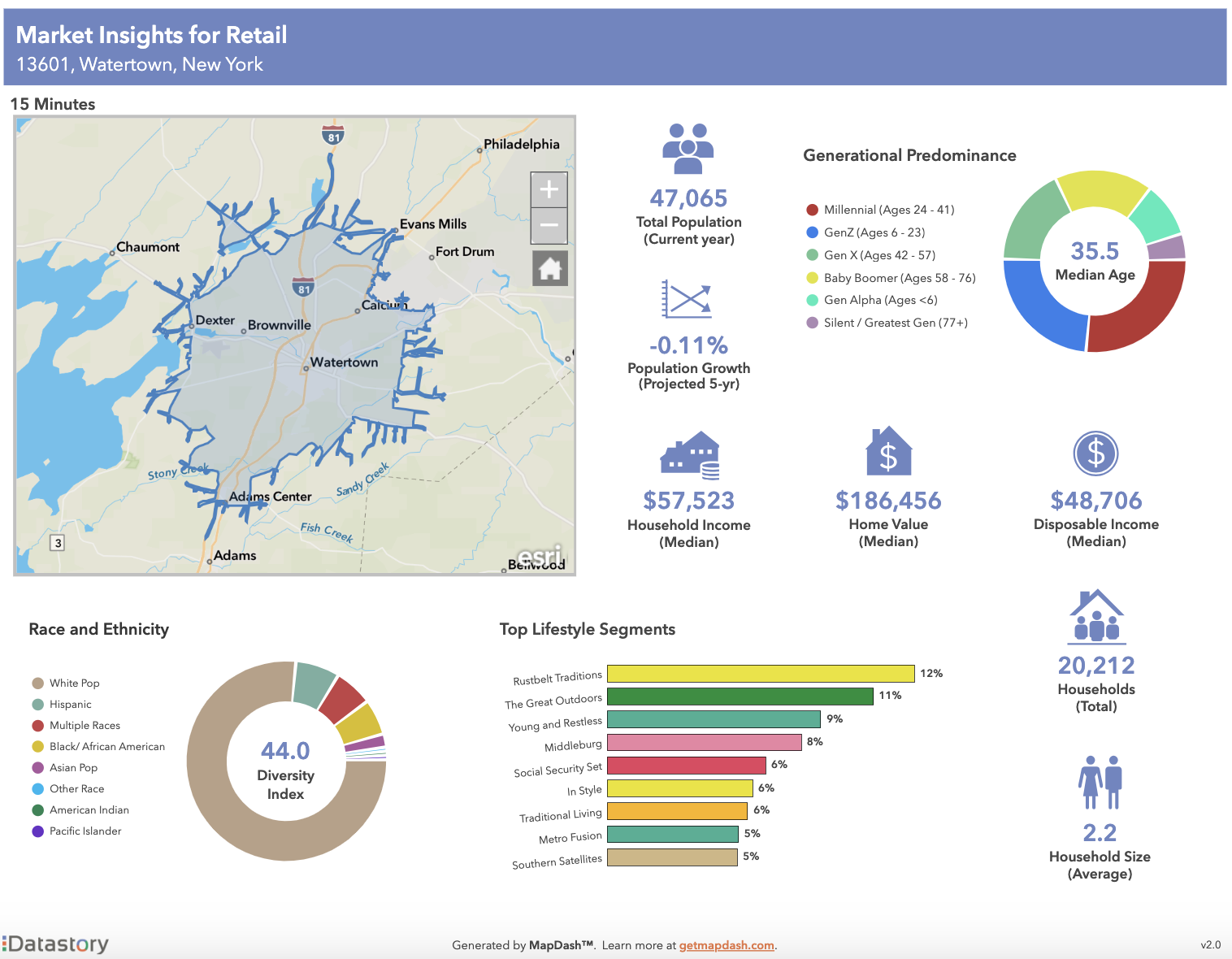Top 5 Ways to Optimize Retail Category Management with Location Intelligence
Leveraging big data is essential for refining retail category management and expanding business-to-consumer (B2C) strategies effectively. Much of the data collected in today’s hyper-connected world is location-based, providing insight into how trends differ by geography and enabling retailers to develop location intelligence that gives them a competitive edge. By analyzing detailed point-of-sale (POS) data, performing competitive comparisons, and factoring in localized demographic and consumer behavior, retailers can leverage this location intelligence to strategically manage product categories and maximize their market reach.
However, traditional location intelligence and big data solutions can be inaccessible. Not only is it extremely resource-intensive to source, clean, ingest, and maintain the multitude of disparate datasets relevant to today’s retail landscape, but conducting analytics often requires extensive data science experience that many retailers simply do not have. While some retailers choose to navigate location intelligence by hiring a team of technical experts that relay insights to decision-makers, more and more are turning to a more cost-effective, user-friendly alternative: MapDash™.
Location intelligence for retail category management
MapDash enables category managers to instantly visualize hundreds of retail-specific datasets on an interactive map to develop strategic location intelligence.
MapDash is a one-stop-shop for retail location intelligence, empowering professionals from all levels of technical experience with the data, analytics tools, and reporting templates needed to develop a data-driven category management strategy. Preconfigured with hundreds of datasets from authoritative sources, MapDash makes it easy for category managers to explore layered datasets together on an interactive map. From consumer foot traffic to lifestyle segments to income and everything in between, retailers can instantly access up-to-date information at multiple geographic scales to derive more informed strategies. What’s more, MapDash provides turnkey location analysis tools related to proximity, drive/walk times, and place filtering so category managers can easily sift through big data to uncover important insights. All of this data and analysis can be succinctly summarized and shared with other stakeholders using MapDash’s ready-made infographic templates, ensuring the key takeaways from location intelligence are accessible to anyone who needs them.
While there are almost limitless ways retailers leverage MapDash to optimize category management, at Datastory we tend to see location intelligence most applied in the following five scenarios:
Enhancing B2C strategies
Utilizing location intelligence in retail category management allows for a granular analysis of sales data, helping retailers identify high-performing categories and adjust strategies in real-time. MapDash provides a platform where retailers can integrate POS data to track sales performance across different regions, store formats, and customer profiles, providing a clear picture of where categories may be underperforming or outperforming - and why.
Identifying opportunities
With MapDash, retailers can understand how local market dynamics impact category performance and adapt strategies accordingly.
MapDash's intuitive analytics tools enable retailers to identify gaps in the market by digging into how factors such as store size, product inventory, and the degree of urbanicity impact category performance. This level of detail helps in adjusting category strategies to better fit local market conditions and consumer preferences, ultimately leading to improved market penetration and increased sales.
Tailoring categories based on consumer insights
Demographic profiling and consumer behavior analysis are critical components of effective category management. MapDash allows retailers to dive deep into demographic data such as income, age, education levels, and lifestyle characteristics, producing insights which can be used to align product offerings with the specific preferences and needs of different consumer segments. This targeted approach ensures that marketing efforts are concentrated where they will generate the most impact, enhancing return on investment.
Optimizing store formats and placements
MapDash’s instant infographic reporting capabilities provide compelling visuals for category managers to share with other stakeholders and drive decision-making.
Strategic store placement and format decisions are vital for optimizing retail operations. Location intelligence from MapDash supports these decisions by providing insights into consumer traffic patterns and competitive landscapes. Retailers can use this data to determine the most strategic locations for new stores, the ideal store size, and the most effective store formats for specific geographic areas, enhancing the overall shopping experience and boosting category sales.
Customizing strategies for urban and suburban settings
Understanding urbanicity is crucial for customizing retail strategies to fit different community dynamics. MapDash helps retailers tailor their category management to the unique characteristics of urban and suburban areas, such as understanding accessibility to public transit or parking options, optimizing product assortments, and configuring store layouts to meet local consumer demands effectively.
Transforming retail with strategic category management
The integration of location intelligence into category management is transforming the retail industry. For retailers aiming to thrive in today’s competitive environment, adopting location intelligence technologies like MapDash is key to achieving strategic agility and a robust competitive edge. MapDash not only facilitates a deeper understanding of market dynamics, but also enhances retailers' ability to strategize effectively across different categories and regions without needing to invest millions in overhead and technical training.
If you’re ready to embrace the power of location intelligence with MapDash to refine your category management strategies, respond dynamically to market changes, and achieve superior market performance, get in touch with Datastory today. Our experts are here to help you transform your retail approach and drive category success with data-driven precision and strategic insights.



